Ten Great DVD Box Sets
![]()
![]()
Broadcast television is far too much like reality – frequently depressing, perennially disappointing, ruinously expensive and pocked with commercials. We rarely watch it.
Television on DVD is a taste of broadcast TV from an alternate universe. Through the alchemy of small polycarbonate discs and modest departures of cash, it’s possible to watch only the best of what airs – or has aired in ages past – with no advertising, no program reminders creeping up from the bottom of the screen and no lame episodes of a poorly written three-camera situation comedy about sexually-ambivalent camel ranchers living in an unnamed suburb of Cleveland.
In that very little of what appears on television is really worth watching, we determined long ago that we could buy DVDs or Blu-Rays of everything we really wanted to view – complete with express shipping from Amazon if the mood took us – and still wind up way ahead of the monthly cash grab for commercial satellite TV. Admittedly, having numerous bookshelves groaning under the weight of box sets wasn’t something we’d originally envisioned.
We now buy television in much the same way as we buy books. We’re considering implementing the Dewey Decimal system to keep track of it all.
Should you find yourself similarly overwhelmed by the shrieking of nothingness that fills your living room when you stab the power button on your television remote, the following are among our favorite DVD box sets. Your mileage and your taste may vary. We’re particularly enamored of our alternate universe.
I hasten to add that these programs are listed here in alphabetical order, rather than in order of preference. They’re all seriously excellent.
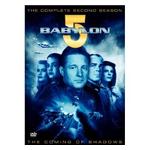
Babylon 5: While its CGI is starting to look a bit dated, Babylon 5 is a remarkable achievement in episodic television. Essentially a five-year movie told in forty-minute installments, it maintains a single – if intensely convoluted – story arc, populated by innumerable brilliantly conceived, artfully written characters, and lots of space ships.
At the dawn of the third age of mankind, a quarter of a million humans and aliens are floating in an enormous space station just as all hell breaks loose, and the galaxy is embroiled in a war to make all lesser wars look like food fights by comparison.
Babylon 5 is tangled with subplots and conspiracies, and is frequently startling in its direction and nuance. One bit of warning – the final episode of its DVD set is suicidally depressing, having been filmed a year earlier as an emergency wrap-up to the series in the event that it was cancelled prematurely. It’s well worth skipping.
In addition to five box sets of episodes, Babylon 5 embraces a box of feature-length television movies, a short-lived spin-off called Crusade and a final direct-to-DVD movie entitled Babylon 5: The Lost Tales, in which several of the actors from the original series reprise their roles with much better special effects… but virtually no budget.
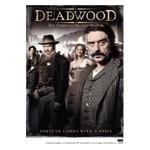
Deadwood: One of the finest works of the golden age of HBO, Deadwood chronicles the early years of the town of Deadwood, South Dakota, legendary mining camp, den of iniquity, we-never-sleep crime scene and cauldron of intrigue. It’s arguably the most faithful western ever shot, which will go some way toward explaining why you really don’t want any young or impressionable viewers in the same time zone as your television set when you drop this puppy in the player.
The lurid profanity of Deadwood’s dialog could peel paint, stun a warthog and make whores blush. That would be real frontier whores, too, not the lacy, refined city whores from back east… but I digress…
The real danger in Deadwood is that it’s so compelling as to make one want to view the whole epic at once, and lay partially comatose upon one’s couch at three in the morning with a handful of caffeine pills to get through just one more episode.
Deadwood ran for three seasons before it was cancelled by HBO. Two feature-length HBO movies were planned to wrap up the story, but they remain unfilmed as of this writing. The series is survived by a lively T-shirt industry, proclaiming among other things “I Got Shot at the Gem Saloon…” and numerous more colorful expressions, which would probably blow the search engine results for this blog most of the way to South Dakota if we were to quote them in print.

Enterprise: Television’s final foray into the final frontier as of this writing, Enterprise chronicles the voyages of the very first starship Enterprise, leaving Earth a century before James Tiberius Kirk boldly split infinitives where no infinitives had been split before. Dark, edgy, approachable and largely bereft of the supercilious “world view” that made its predecessors a bit annoying at times, this is Star Trek populated by real humans and driven with technology supplied by the lowest bidder.
Unlike earlier treks, the crew of this Enterprise rarely seems sure of where they’re going, or what sort of trouble they’ll get into when they arrive. Rich with a sense of genuine exploration and adventure, its stories often seem just beyond the next horizon.
The universe of Enterprise is populated by a troupe of unusually gifted actors, who clearly had their characters absolutely nailed before the first camera began rolling. Its writing, sadly, is a bit uneven – the tales of Enterprise stagger from breathtaking vistas of alien realms to a handful of medieval morality plays that would have folded on opening night even during the middle ages. Remarkably, its actors succeed in carrying the latter off to a singular degree.
Even the ship’s beagle is entertaining.
Enterprise cruised the stars for four years before it was cancelled amidst great screaming, threats uttered in guttural Klingon and protests by legions of fans wearing pointy rubber ears. At least, one hopes they were rubber. It has subsequently found itself reviled in many quarters among “serious” fans of television science fiction, and it’s something of a forgotten jewel for this reason.
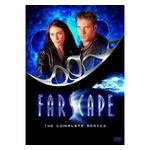
Farscape: Easily the weirdest and most imaginative science fiction ever devised for television, Farscape will grab you by the helmet of your space suit during its first episode and fling you remorselessly through every parallel universe it can think of for the next four solar years. It’s visually spectacular, flawlessly written and portrayed by the most talented actors and scaliest muppets you’re likely to encounter in known space.
Hmmm… yes… some of the characters really are elaborate muppets, but you can’t tell the difference between a real alien and a polyester and latex alien. Trust me.
John Creighton is a shuttle astronaut who manages to get himself hurled through a wormhole and winds up half way across the galaxy, where he throws in with a living ship inhabited by a band of escaped prisoners as they race into the uncharted blackness of space to keep one giant leap ahead of the law. While almost all of them have the usual numbers of eyes and appendages, few of them are what one might call human. The bald blue woman who becomes sexually aroused by sunlight – not surprising, actually, she being a plant and all – is just the sort of life form one would expect to encounter in the aforementioned uncharted blackness of space.
Note to self – painting an actress blue from head to toe for two solid years may have unforeseen health consequences. Sadly, the bald blue woman had herself written out half-way through the series.
Filmed in Australia at the behest of Nine Network and the SciFi Channel, Farscape ventures through dark backwaters of outer space that a North American production company wouldn’t have dared sent unmanned probes into. It’s profane, lascivious, violent and decidedly warped. The sense that its actors are enjoying themselves even more than you will is tangible.
Farscape ran for four seasons, whereupon it was abruptly cancelled by SciFi. It returned two years later as a mini-series, Farscape: The Peacekeeper Wars, to wind up its turgid story arc. The entire series is available as a brick of a box set, with the miniseries having been edited into a long movie on a separate DVD.
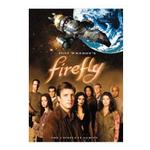
Firefly: If you can’t make up your mind between Enterprise and Deadwood, you can have both in one box… sort of. Firefly posits humanity having flung itself to the stars, and for reasons rarely touched on in the show itself, having thereafter reverted to cowboys. It’s a space western.
Set in a solar system with a great many more inhabited planets than ours, Firefly follows the crew of the ship Serenity as they wander from world to world getting themselves into trouble, while avoiding the law, the bad guys and the “reavers,” who are just extremely nasty… and never actually seen in the series proper. One of the characters says of them, “If they take the ship, they’ll rape us to death, eat our flesh and sew our skins into their clothing. And if we’re very, very lucky, they’ll do it in that order.”
Firefly enjoys a lot of dialog like that.
Despite its improbable premise, Firefly is a compelling and engaging story. It’s told by a cast of brilliant actors, deft camerawork, masterful special effects and well-crafted stories. Unlike Deadwood, most of its profanity is in Mandarin Chinese rather than English – something else that’s never actually explained – and this seems to have been sufficiently decorous for American network television.
Firefly ran for just thirteen episodes on the Fox network before it was cancelled. A subsequent TV movie, Serenity, sought to resolve its truncated story.
It’s enormously fun, but all too brief.
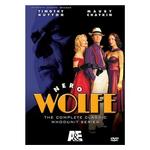
Nero Wolfe: The definitive screen adaptation of Rex Stout’s gravitationally-challenged pulp fiction detective, A&E’s A Nero Wolfe Mystery is easily some of the finest television to arrive in a box. It recounts the brilliant deductions and consuming appetite of its eponymous protagonist – who weighs one seventh of a ton and as such almost never leaves his New York brownstone – as told by his wise-ass assistant, Archie Goodwin.
Set in the 1950s – albeit a somewhat tidier and yet more sinister 1950s than history records – A Nero Wolfe Mystery evinces a palette of classic detective stories with an ensemble cast, many of whom play different supporting parts in each episode. To watch one is to be transported back to a New York of jazz and gangsters, shady cops and flashy cars… ‘cept it was all filmed in Toronto.
A Nero Wolfe Mystery is one of the rare instances of network television in which everything was flawless. The actors who brought its characters to life were superb, all the more so in that many of them were called upon to portray widely varying characters from one episode to the next. The sets were impeccable. The writing managed to capture the spirit of Rex Stout’s novels while making their narratives into elegantly nuanced television. The dark, jazzy score was almost an additional character in the drama, all by itself.
A Nero Wolfe Mystery ran for two years on A&E before it was cancelled, ostensibly because it cost too much. I’d imagine one episode’s budget exceeded a whole year of Dog The Bounty Hunter.
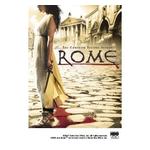
Rome: Arguably the last of the truly epic HBO miniseries, Rome is violent, lurid, wanton, treacherous and the most effective technology for disabling the Pause button on a DVD player’s remote yet devised. A joint production of HBO, the BBC and Radiotelevisione Italiana, Rome is set in the first century BCE, beginning with Caesar’s conquest of Gaul. Its principal characters are two mostly fictional Roman legionaries, Lucius Vorenus and Titus Pullo, who rub shoulders with most of the memorable tyrants, traitors, collaborators, strumpets and scoundrels of their era. They’re “mostly fictional” in that Julius Caesar mentions soldiers by these names in his books De Bello Gallico and Commentarii de Bello Civili (The Gallic Wars and Commentary on the Civil Wars respectively) – although they’re nowhere near as entertaining therein.
Not only is Rome unsuitable for young or sensitive viewers – you’d do well to cover your dog’s eyes through much of it.
This is the Rome of titanic legend – everybody who’s anybody seems to be perpetually murdering or sleeping with someone. Unlike as in more timid television, there are no commercials to cut to when the action in Rome heats up, and as such nothing is left to your imagination. Whatever else you may say of primitive civilizations, they had some serious babes back then.
The first season of Rome is said to have set HBO back well over one hundred million dollars, and the money clearly went into the sets… and the writing… and the actors… and the locations… and cinematography… everything about Rome is flawless. The intricate, layered stories that drive it are written with laser-sharp timing and subtle wit. They’re brought to life by actors every one of whom appears to have born and raised for their parts. The locations are compelling. The blood is disturbing.
The animated three-dimensional opening title sequence all by itself is vastly more entertaining than entire episodes of most television series.
Rome is reasonably faithful to the history it draws on, but its writers clearly knew when to take liberties with the classical authors upon which it’s based. It never turns into a PBS documentary, even for a heartbeat. It’s some of the best drama on video.
Rome ran for two bloody, depraved seasons — it was cancelled by HBO in 2006. Broadcasting & Cable magazine described it as “notoriously expensive.” Rumors have since bubbled up through the murky swamps of time that one or more television movies were to continue its story, but thus far, they’ve proved little more than unsubstantiated Roman legends.

Stargate: North American television’s longest-running science fiction series, Stargate is the science fiction you read when you were a kid, wrought as 42-minute episodes. If you’ve never seen it, I envy you the opportunity to watch it for the first time – it’s brilliant.
The premise of Stargate, as lifted from the 1994 feature film of the same name, is a huge metal ring left on earth by mysterious extraterrestrials which, when suitably tickled, will transport select cast members to other planets. It seems to offer an infinite selection of them, and there’s something weird or evil or dangerous or mysterious or archly amusing on every one.
Admittedly, they all look a lot like British Columbia – where the series was filmed – but the serpentine aliens with glowing eyes and death rays will keep your mind off the scenery.
Stargate is brought to life by superb actors, gifted writers and ingenious cinematographers and special-effects artists. Its stories are suffused with dark humor and sparkling dialog. While the talking heads in the “behind-the-camera” documentaries that accompany Stargate on DVD mention its limited budget from time to time, there’s little evidence of it in the episodes, which have the production values of serious movies.
One of the notable attributes of Stargate is its writers’ willingness to borrow plot lines from other television shows, novels, mythology and just about anything else that isn’t nailed down. Literary purists will no doubt protest, but the result is a textured universe with innumerable engaging tales to tell.
The first manifestation of Stargate, Stargate SG-1, ran for ten seasons – four on Showtime and the subsequent six on the SciFi Channel. It was spun off into Stargate: Atlantis several years before it ended – an expedition of military personnel and scientists use a stargate to locate the fabled city of Atlantis in a distant galaxy, and encounter a troupe of different nasties. Stargate: Atlantis ran for five seasons, and was finally replaced by Stargate: Universe. Stargate: Universe – which embodied something of a departure from the narrative and the attitude its predecessors – was cancelled after two seasons.
Stargate SG-1 has been reprised in two direct-to-DVD movies, as of this writing, both of which were every bit as enjoyable as the series. Rumors of additional films emerge from hyperspace from time to time.
Stargate SG-1 has won a truckload of awards – that would be a full-size large-box pickup truck with dual axles and air shocks, not an imported SUV with a hatchback. It appears to have been much beloved of the American military, which loaned its production company at least one real-life air-force general, the nuclear submarine USS Alexandria and several F-15s, among other things.
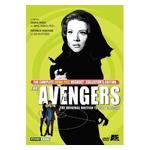
The Avengers: Certainly the most venerable of our favorite DVD box sets, this classic British spy series evokes the essence of an era that thankfully, neither of us is old enough to remember. The Avengers resides in an alternate reality of the mid-1960s, wherein the writers and actors who created this show were at liberty to ignore select laws of physics, recent history, societal morality and most of the extant traffic regulations of the period.
The Avengers follows upper class secret agent John Steed and his ostensibly platonic companion Emma Peel through a psychedelic cold war populated with all manner of eastern-European spies, deranged villains and punctilious civil servants, the latter being without question the most evil force in the known universe. So far divorced from reality as to be almost other-worldly, its improbable plot elements and funky technology work brilliantly.
If the satire were any thicker, you could spread it on your morning toast.
Having little connection with the actual period in which it’s set – and having been filmed with genuinely impressive production values — The Avengers rarely seems dated or shopworn, even half a century on. It’s an impeccably-tuned time machine with luxury seating.
It’s worth noting that The Avengers enjoyed a long run on British television – and not all its episodes arguably belong on your bookshelves. It began in 1961 as a very low budget black and white production shot on video tape, which will probably only interest cultural historians. It was picked up by ABC in the United States in 1965, which subsequently provided it with the funds to shoot on color film – something its opening credits seem inordinately proud of. Its apogee spanned three years, whereupon the actress who played Mrs. Peel reputedly discovered that she was being paid less than one of the cameramen and she returned to doing Shakespeare. The show never quite got its mojo back thereafter. It resurfaced once more as an engagingly quirky theatrical reboot in 1998, with different actors.
The legendary three seasons of The Avengers appears on DVD as The Avengers – The Complete Emma Peel Megaset… presumably thus titled because its eponymous protagonist raised no small number of American eyebrows back in the day by running around in tight leather jumpsuits. The original film has been artfully remastered for DVDs, and the box set includes several black and white “lost” episodes.
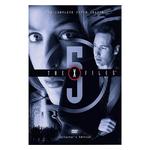
The X-Files: Periodically tedious when it originally aired on broadcast television, the X-Files is a guilty pleasure on disc. Its transformation is due in no small part to the absence of commercials to shatter the continuity of its layered plots, and the perpetual luxury of playing the next episode to determine whether the truth might actually be out there after all.
A grand temple to the gods of paranoia, The X-Files follows the careers of its two iconic FBI agents, Fox Mulder and Dana Scully, as they catch fleeting glimpses of every paranormal phenomenon, alien abduction and government conspiracy ever floated on the Internet. It makes a decided point of never getting to the point, revealing maddening wisps of an ill-defined secret with each episode.
Did people really used to carry cell phones that large?
The early seasons of The X-Files seem to have made a virtue of their modest budgets and limited locations – pretty much every sinister mid-western small town and urban post-apocalyptic demolition project was in fact some facet of British Columbia. Their taut, edgy writing, deliberately murky cinematography and the disquieting screen chemistry of its stars are far more compelling than a CGI budget. The first five box sets absolutely rock.
While it seems almost unconscionable to suggest, the writers behind the X-Files appear to have run out of phantasms and conspiracies, and its principal actors lost their initial enthusiasm for the show, quite some time before its credits ran for the final time. The latter half of The X-Files – filmed in sunny California rather than fog-shrouded Vancouver – are workmanlike, well-plotted television, but they lack the nervous energy and sense of genuine dread that drove their predecessors.
The X-Files ran for nine seasons, and through two theatrical films. The first, The X-Files: Fight the Future, was seriously engaging, fitting into the mythology of the television series between its fifth and sixth seasons. The second, the 2008 The X-Files: I Want To Believe, was released six years after the cancellation of the series. In it, Mulder and Scully, now a middle-aged couple, return to the field to track a serial killer. The opportunity to hang with the characters one last time is engaging – the story is ultimately disposable.